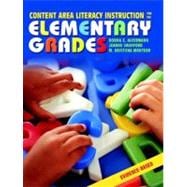
| Preface | vii | ||||
| PART ONE Introduction | 1 | (16) | |||
|
3 | (14) | |||
|
5 | (1) | |||
|
6 | (4) | |||
|
10 | (2) | |||
|
12 | (2) | |||
|
14 | (3) | |||
| PART TWO Knowledge Base | 17 | (102) | |||
|
19 | (21) | |||
|
20 | (2) | |||
|
22 | (1) | |||
|
23 | (3) | |||
|
26 | (1) | |||
|
27 | (2) | |||
|
29 | (1) | |||
|
30 | (1) | |||
|
31 | (4) | |||
|
35 | (1) | |||
|
36 | (1) | |||
|
37 | (3) | |||
|
40 | (19) | |||
|
41 | (2) | |||
|
43 | (10) | |||
|
53 | (1) | |||
|
53 | (2) | |||
|
55 | (4) | |||
|
59 | (19) | |||
|
61 | (3) | |||
|
64 | (4) | |||
|
68 | (4) | |||
|
72 | (6) | |||
|
78 | (25) | |||
|
79 | (2) | |||
|
81 | (2) | |||
|
83 | (13) | |||
|
96 | (1) | |||
|
97 | (6) | |||
|
103 | (16) | |||
|
105 | (3) | |||
|
108 | (3) | |||
|
111 | (3) | |||
|
114 | (5) | |||
| PART THREE Learner Differences | 119 | (36) | |||
|
121 | (17) | |||
|
123 | (4) | |||
|
127 | (6) | |||
|
133 | (5) | |||
|
138 | (17) | |||
|
139 | (4) | |||
|
143 | (4) | |||
|
147 | (8) | |||
| PART FOUR Instructional Decisions | 155 | (76) | |||
|
157 | (18) | |||
|
159 | (2) | |||
|
161 | (4) | |||
|
165 | (10) | |||
|
175 | (18) | |||
|
177 | (1) | |||
|
178 | (3) | |||
|
181 | (12) | |||
|
193 | (18) | |||
|
194 | (2) | |||
|
196 | (8) | |||
|
204 | (3) | |||
|
207 | (4) | |||
|
211 | (20) | |||
|
213 | (3) | |||
|
216 | (3) | |||
|
219 | (1) | |||
|
220 | (2) | |||
|
222 | (3) | |||
|
225 | (6) | |||
| PART FIVE Toolbox of Teaching and Learning Strategies | 231 | (16) | |||
| APPENDIX A Leveled Informational Books | 247 | (18) | |||
| APPENDIX B Informational Texts and Children's Literature for Teaching Content | 265 | (8) | |||
| APPENDIX C Correlation Matrix of English Language Arts Standards and Reading Professionals Standards with Chapter Content | 273 | (10) | |||
| References | 283 | (11) | |||
| Author Index | 294 | (5) | |||
| Subject Index | 299 |
The New copy of this book will include any supplemental materials advertised. Please check the title of the book to determine if it should include any access cards, study guides, lab manuals, CDs, etc.
The Used, Rental and eBook copies of this book are not guaranteed to include any supplemental materials. Typically, only the book itself is included. This is true even if the title states it includes any access cards, study guides, lab manuals, CDs, etc.